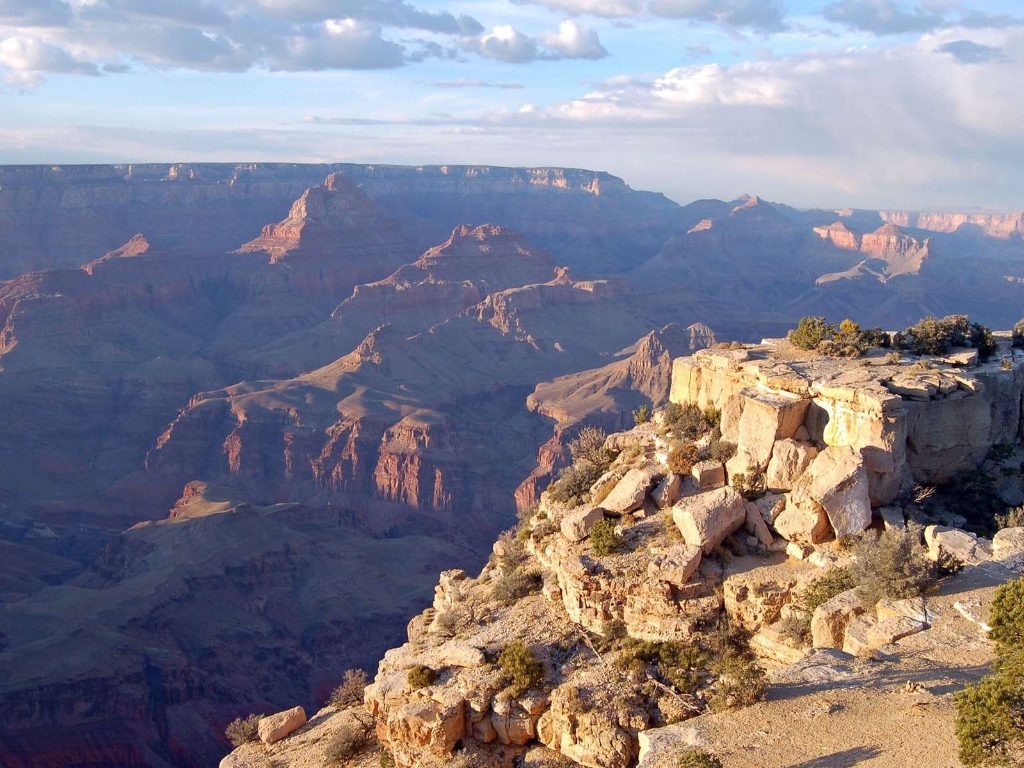
This viewpoint is named for Thomas Moran, an artist well known for his landscape paintings of the western United States. His work helped to create many national parks. Explore this point for a good spot to watch the shadows and changing light throughout the day, just as the artist did.
Thomas Moran
In 1873, Hudson River School artist Thomas Moran joined John Wesley Powell on his exploratory expeditions of Grand Canyon and the Colorado Plateau. Shortly after his return, Moran set to work on a canvas equal in size and ambition to his earlier 1872 painting from Yellowstone National Park, "The Grand Canyon of the Yellowstone". In 1874, Congress purchased the result, "The Chasm of the Colorado" (1873-1874, National Museum of American Art) for $10,000. It became the second of Moran's western landscapes to hang in the United States Capitol, and is now part of the Smithsonian Institution, residing primarily at the National Gallery of Art in Washington, D.C.
Geology in Depth: Grand Canyon Supergroup
Geology is a prominent feature at any Grand Canyon viewpoint, but especially so at Moran Point. From here, all three main rock groups of Grand Canyon are clearly visible.
The horizontal sedimentary layers of rock that make up the majority of what we see in Grand Canyon's depths are known as the Layered Paleozoic Rocks. Beneath these relatively flat-lying layers are the tilted layers of the Grand Canyon Supergroup, which represent a significant portion of the canyon's geologic record even though they are only exposed in a few isolated sections of the canyon. These tilted layers are only visible from a few select viewpoints along the rim, including here at Moran Point. The black Vishnu Schist and pink Zoroaster Granite, as well as a few other associated metamorphic and igneous rocks are collectively known as the Vishnu basement rocks. These are the oldest rocks in the canyon, and thus are found far below near the Colorado River, beneath the over-lying sedimentary layers.
The tilted strata visible deep within Grand Canyon at this viewpoint are part of a series of rock layers known as the Grand Canyon Supergroup. From here, look across the canyon to see them in the walls of the North Rim. The lower half of the Supergroup, known as the Unkar Group (1255-1100 million years old), was deposited by north-flowing paleorivers carrying sand and mud from now-eroded mountains in what is now the region of West Texas. The upper half of the Supergroup (which is not visible from here) is known as the Chuar Group (780-729 million years old), which was deposited in a shallow sea while all of Earths' continents were joined together as the supercontinent Rodinia. Stromatolites in both groups record single celled life that existed in shallow seas. Chuaria fossils, also found within these layers, are small 750-million-year-old single-celled fossils that record a time of diversification of microbial life.
From Moran Point, one can observe prominent tilted layers of the Grand Canyon Supergroup directly to the north, sitting on the unlayered black and pink Vishnu basement rocks to the west. The short segment of the Colorado River visible here is cutting through a slope of orange Hakatai Shale, with tall cliffs of brown Shinumo Sandstone above. These vibrant orange layers of rock can also be seen on this side of the river, directly below the viewpoint to the northwest. Beyond these layers, on the far side of the canyon, one can observe four distinct layers of rock sitting on the Vishnu basement rocks. In order, these are a sill of black Cardenas Basalt, purple layers of Bass Formation, a slope of orange Hakatai Shale, and brown cliffs of Shinumo Sandstone.
Is there something we missed for this itinerary?
Itineraries across USA


















































